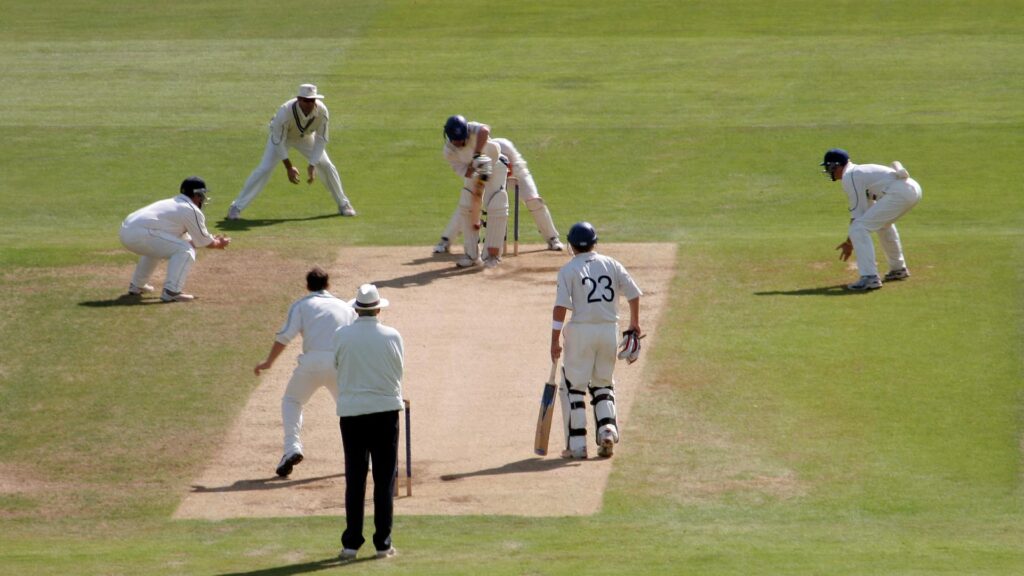Team data is the next revolution for sports strategy


By Ed Smith, Director of the Institute of Sports Humanities and Professor Nick Jennings, Vice-Chancellor and President of Loughborough University.
This article was first published in The Sunday Times.
It’s clear that data has already revolutionised some aspects of sports strategy, and that even people who regard themselves as intuitive and distrusting of data are operating on a continuum — and the whole continuum has shifted significantly towards data-informed decision-making.
As extreme examples, football clubs like Brighton & Hove Albion and Brentford – both owned by professional gamblers – have used data-rich models to value players differently (and better) than the consensus. They have been able to identify players who are under-valued (so they can buy cheap) as well as players who are over-valued (so they can avoid misallocating resources, or alternatively, sell on at a profit when the price is right). Both clubs have successfully punched far above their weight. This is the evolution of the original Moneyball playbook, in which the smarter ‘Davids’ find the (data) tools to fell the richer ‘Goliaths’.
The imprint of data is stamped on on-field tactics as well as off-field recruitment. Basketball’s Daryl Morey – first as general manager of the Houston Rockets then the Philadelphia 76ers – reshaped his sport by elevating the three-point shot. Previously, teams had been too risk-averse in taking three-pointers: though it seemed unlikely to many insiders, the reduced consistency of three-pointers was outweighed by their higher expected value overall. What once looked weird is now mainstream.
In the previous Cricket World Cup cycle, England’s white-ball teams made a similar calculation – first in the run-up to the 2019 ODI World Cup and then before the 2022 T20 World Cup (England won both). Previously, cricket teams had generally been failing to exploit their resources effectively by being too risk-averse about losing wickets, hence scoring too slowly and therefore “leaving runs out on the field”. The ultra-aggressive approach of England’s individual batsmen within those teams was actually highly rational: it was a daring form of common sense.
At the level just below England, better data is now providing improved evidence about which next-in-line players are better suited to the step up to international cricket. Hawk-Eye ball-tracking data is now available at every county game where previously it was just for televised matches. This information will show which county players excel when the level of the match goes up – such as batting against faster bowling or more extreme spin – and the experience more closely resembles international cricket.
So far, we’ve considered data that relates predominantly to individual actions and metrics. But the next chapter in the data and AI story is set to revolve around more dynamic and collective questions.
The theme, in fact, was our first prompt to collaborate, because although we are co-authors here we arrive at the question of data and AI in sport from opposite perspectives. One strand of Ed’s last book Making Decisions explored the enduring relevance of instincts and judgments, ie human rather than machine intelligence, especially how it can augment (and sometimes overrule) algorithms and mathematical models. Nick’s academic career as an AI researcher leads him to the same terrain from the rival direction: how can we build effective partnerships between intelligent computer systems and humans to make the best use of their differing strengths?
In football, tracking a player’s individual movements and actions is now relatively easy and cheap. But what about players’ ability to enhance the team’s collective movement and shape? It is, after all, the success of the team which matters most. In Johan Cruyff’s adage: “Choose the best player for every position and you’ll end up not with a strong XI, but with 11 strong ones.” Modern AI systems that have rich models of effective teamwork and optimise for the group, not the individual, could determine the relative value of the various positions and permutations of players on the pitch. They would focus on which players add the most to the collective intelligence of the team.
Such an approach would have consequences for the familiar critique of (legacy) data: that it can encourage players to become unhealthily self-absorbed with their individual stats. But by making metrics properly team-orientated, that situation can be reversed: instead of encouraging selfish play (as not-outs could be in cricket, or risk-averse but unproductive “completed passes” may be in football), data could reinforce actions and decision-making that serve the team. However, just as an individual should not be judged without considering their teammates, a team should not be judged without considering their opposition. As in so many areas of life, the answer to the question, “Who’s better?” demands an understanding of context. Where? Who is alongside them? And against whom are they playing?
This means the AI system also needs to embody this context. It needs to model both the cooperation between the players on the same team and the competition that happens between the teams. This analysis needs to go much deeper than individually measured “match-ups” and will require digital twins that allow many different scenarios to be explored in an extensive suite of game simulations.
It’s very early in the story, but it will be intriguing to see if Arsenal alternates between two goalkeepers, as Mikel Arteta has hinted they may, potentially on a horses-for-courses basis. If it goes wrong, of course, it will provoke pundits’ fury, as selection stability in the team’s spine is an entrenched convention. But if it works, it may point to a more flexible approach to selection across the whole pitch.
The interaction of conditions, colleagues and opponents has always been at the heart of all sports strategy. And it’s time for the next wave of collective data and team-based AI to catch up and support this.
Vice-Chancellor's Communications
Opinions and comment from the Vice-Chancellor, Professor Nick Jennings

